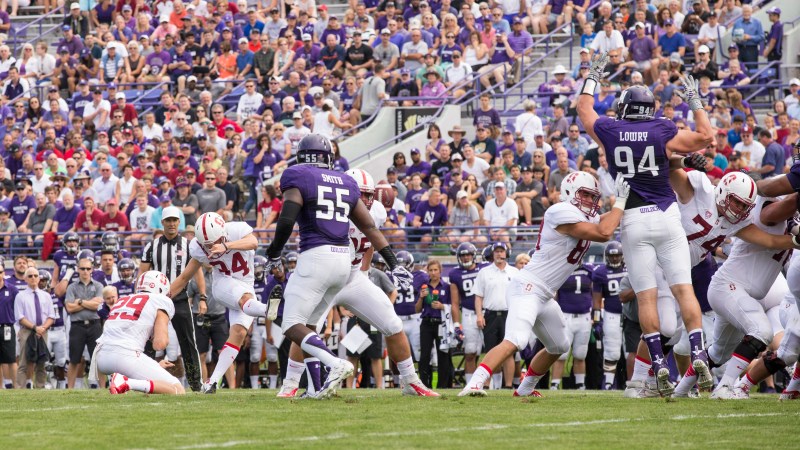While it may be painful to read and for the memories it might evoke, here’s a breakdown of some key statistics that made some of the difference in Stanford’s loss to Northwestern.
0: Number of touchdowns scored by the Stanford offense.
This one seems a little obvious, but it’s important to note that fans fears from the first 10 games of last season regarding Stanford’s inability to convert in the end zone seem to still be a problem, albeit the small sample size. Stanford made just three trips to the red zone, with two ending in Conrad Ukropina field goals and the third ending with the interception that sealed the victory for Northwestern.
5: Penalties committed by Stanford over the course of the game.
While this number doesn’t seem too high, the penalties came at very unfortunate times and demonstrated a frustrating degree of inexperience. Two were for illegal substitutions on offense, and the other three were for offside on defense. This didn’t include multiple instances when the team either burned timeouts or took far too long to get a play off after a change of possession. Perhaps it was the offseason jitters, but Stanford seemed out of its depths on both sides of the ball and the consequences were major.
20: Stanford’s third down conversion percentage.
While we could look at many different statistics to highlight Stanford’s offensive woes, this one seems to stand out. The Cardinal just could not manage to get anything going after their first drive of the game. Stanford punter Alex Robinson certainly got his day’s work, with a whopping 7 punts in his first career start. But for the most part, Stanford could not find an offensive rhythm, conceding the ball after quick 3-and-outs time and time again.
95: Number of consecutive games in which Stanford had scored at least 10 points, making it the best such streak in the nation.
As head coach David Shaw said after the game, “You can’t score six points and beat anybody.” Although plenty of credit is due to the Northwestern defense that played with the sense of aggression that the Stanford defense seemed to lack, virtually the same Stanford offensive unit has done much better against much better defenses. It was a head-scratcher from start to finish.
225: Total rushing yards for Northwestern.
The Wildcats won this game on the ground, as quarterback Clayton Thorson and running back Justin Jackson both displayed tremendous talent in the running game. While the Stanford defense performed much better than its other half, it by no means was of the quality to which Stanford fans have become accustomed. Missed tackles and a lack of urgency allowed Northwestern to extend drives and break loose for the occasional big play, such as Thorson’s 42 yard touchdown run in the second quarter.
Contact Sandip Srinivas at sandips ‘at’ stanford.edu.
